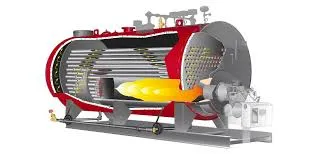
Oct . 10, 2024 19:16 Back to list
hot water boiler diagram
Understanding Hot Water Boiler Diagrams A Comprehensive Overview
Hot water boilers play a crucial role in providing heating solutions for residential, commercial, and industrial applications. To effectively grasp how these systems operate, it’s essential to understand the fundamental components and layout depicted in a hot water boiler diagram. This article will delve into the intricacies of hot water boiler diagrams, shedding light on their significance, components, and the overall system functionality.
What is a Hot Water Boiler?
A hot water boiler is a device that heats water and distributes it for various applications, including space heating, domestic hot water, and industrial processes. Hot water boilers operate using a variety of fuel sources, such as natural gas, propane, oil, or electricity. The design of these systems can vary widely, but they all serve the primary purpose of converting energy into heat for heating water.
Key Components of a Hot Water Boiler System
A typical hot water boiler diagram includes several key components. Understanding these parts helps in comprehending how a hot water boiler operates
1. Boiler Body The main part of the boiler where heat exchange occurs. Water is heated inside the boiler body, either by combustion of fuel or electric heating elements.
2. Heat Exchanger A critical component that allows the transfer of heat from the combustion gases to the water without mixing the two. This is often represented in the diagram as curved or tubular pathways.
3. Burner This is where the fuel combustion takes place. The burner ignites the fuel and creates hot gases that flow through the heat exchanger.
4. Controls and Sensors Various control systems are integrated into the boiler diagram, including thermostats, pressure gauges, and safety valves. These components ensure the system operates efficiently and safely by regulating temperature and pressure.
5. Circulator Pump This pump moves heated water from the boiler to the points of use (like radiators or taps) and returns cooler water back to the boiler for reheating.
hot water boiler diagram

6. Expansion Tank A safety feature that accommodates the expansion of water as it heats up, preventing excessive pressure build-up in the system.
7. Vents and Flues These components facilitate the removal of combustion gases from the boiler to the outdoors, ensuring proper ventilation and safety.
8. Piping Systems The network of pipes that transports heated water to heating elements (like radiators) throughout the building and returns cooler water back to the boiler.
How Hot Water Boilers Work
Understanding the operation of hot water boilers requires analyzing the flow of water and energy throughout the system. Initially, the burner ignites, generating hot gases that flow through the heat exchanger. This process warms the water contained within the boiler body. As the water heats, it becomes less dense and rises through the system.
The circulator pump is vital in this process, as it distributes the hot water through the piping to various outlets. As water flows through heating elements, it transfers its heat to the surrounding air, cooling down in the process. The now cooler water returns to the boiler via return pipes, where it is reheated, continuing the cycle.
Importance of Understanding Boiler Diagrams
Hot water boiler diagrams are invaluable tools for both technicians and homeowners. For technicians, these diagrams provide insight into the system’s layout, aiding in maintenance, repair, and troubleshooting. Homeowners can benefit from understanding boiler diagrams to recognize the components involved in their heating system, which empowers them to make informed decisions regarding upgrades, replacements, or energy efficiency improvements.
Conclusion
In conclusion, hot water boiler diagrams offer a detailed representation of the components and workings of these essential heating systems. By comprehensively understanding the diagram and the roles of each component, users can appreciate the efficiency, safety, and necessity of hot water boilers in various settings. Whether for personal knowledge or professional troubleshooting, being familiar with hot water boiler diagrams enhances one’s ability to handle heating system issues effectively.
-
High-Efficiency Commercial Oil Fired Steam Boiler for Industry
NewsJul.30,2025
-
High-Efficiency Biomass Fired Thermal Oil Boiler Solutions
NewsJul.30,2025
-
High Efficiency Gas Fired Thermal Oil Boiler for Industrial Heating
NewsJul.29,2025
-
High-Efficiency Gas Fired Hot Water Boiler for Sale – Reliable & Affordable
NewsJul.29,2025
-
High Efficiency Biomass Fired Hot Water Boiler for Industrial and Commercial Use
NewsJul.29,2025
-
High-Efficiency Biomass Fired Hot Water Boiler for Industrial Use
NewsJul.28,2025
Related PRODUCTS






















